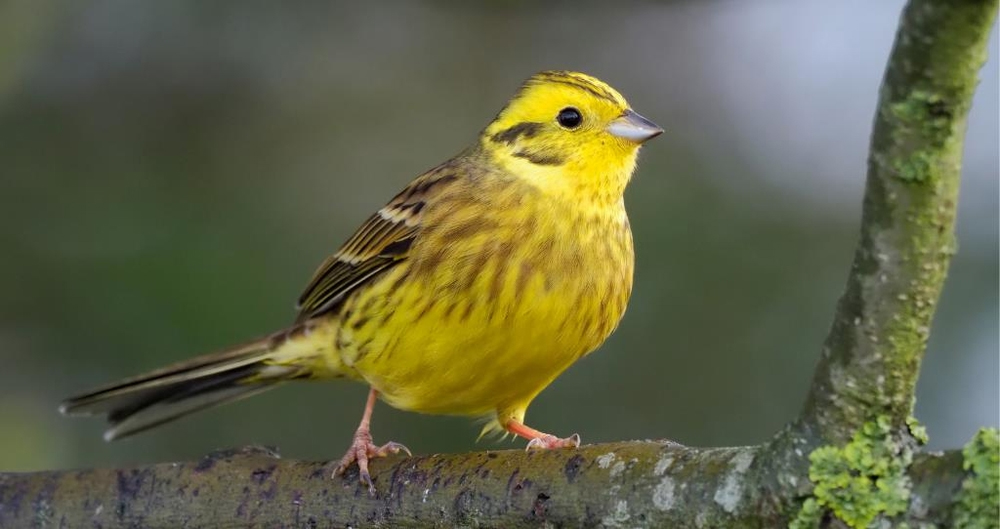The 2021 Big Farmland Bird Count has been extended by a week in light of the recent cold weather. Help us showcase the work farmers do to provide habitats by spending 30 minutes recording the birds you see on your land.
The annual count, run by the Game & Wildlife Conservation Trust (GWCT) and sponsored by the NFU, runs until 21 February 2021. Follow the steps below to find out how to take part.
How to take part in the 2021 Big Farmland Bird Count:
As most participants count alone or with family members, outside, the Big Farmland Bird Count can be safely carried out within Covid-secure guidelines. Species guides, including short videos, will be available at www.bfbc.org.uk.
1) Download your count sheet from the BFBC website www.bfbc.org.uk
2) Count your birds! On a day between 5 and 21 February, spend about 30 minutes recording the species and number of birds seen on one particular area of the farm.
3) Once you’ve completed your count, simply submit your results at www.bfbc.org.uk
At the end of the 2021 count, the results will be analysed by the GWCT. All participants will receive a report on the national results once they have been collated.
NFU Deputy President Stuart Roberts:
I went and did the Big Farmland Bird Count yesterday afternoon #BFBC Sometimes we should all take time to just stop and listen to the birdsong around us. Thanks @Gameandwildlife for organising this again. Please get out and take part yourself - turn the sound up pic.twitter.com/gsWF0VQKg8
— Stuart Roberts (@HertsFarmer) February 7, 2021
NFU Environment Forum chairman Phil Jarvis:
??Check out this short video from @Farmerphil1 as he takes part in this years Big Farmland Bird Count #BFBC
— Game & Wildlife Conservation Trust (@Gameandwildlife) February 5, 2021
Watch here ??https://t.co/ShCrvSysxp pic.twitter.com/PU9I9yxGxG
I'm posting videos on my facebook page. #BFBC @Gameandwildlife @NFUtweets pic.twitter.com/MYlCitJ9tr
— Phil Jarvis (@Farmerphil1) February 5, 2021
The 2020 Big Farmland Bird Count was a huge success
Last year, more than 1,500 farmers across Britain overcame challenging conditions to make the 2020 Big Farmland Bird Count (BFBC) the biggest since it launched in 2014 (read more here).
“With 71% of Britain’s countryside looked after by farmers, land managers and gamekeepers, they are crucial to ensuring the survival of cherished bird species like skylarks, yellowhammers, corn buntings and wild grey partridges,” says Dr Roger Draycott, organiser and head of advisory services at the GWCT.
“Many of them are already doing fantastic work to support and conserve our native species, including supplementary feeding through winter or growing crops specifically to provide seed for birds, which often goes unrecognised. The Big Farmland Bird Count gives them a chance to see the results of their efforts and provides a crucial national snapshot of the health of the UK’s farmland birds.”
It will be the third year that the NFU has sponsored the nationwide citizen science project that helps show which farmland birds are benefiting from conservation efforts while identifying the species most in need of help.
NFU President Minette Batters said: “Alongside producing climate-friendly food, farmers are working hard to maintain and improve the iconic British countryside by enhancing habitats, supporting pollinators and soils, and protecting wildlife.
“The Big Farmland Bird Count is always a fantastic way for farmers to record the birdlife found on their farms and last year saw record numbers of farmers braving stormy weather to take part and record many different threatened species of farmland birds.
“I am pleased that the NFU is able to sponsor this event and I would encourage all farmers to take part, so we can again pull together a vital national snapshot of the state of the nation’s farmland birds.”

NFU member and Cambridgeshire farmer Tom Martin (pictured above) explains why he takes part: “The Big Farmland Bird Count is a fantastic way to check on the status of our farmland birds, giving me a good idea of numbers and how our conservation measures may be impacting populations.
"I really believe that farmers are the answer in supporting our wildlife and stewarding our environment and the BFBC is a great way to demonstrate that. Before I took part, I had no idea how many species of bird called our farm their home, and now I look forward to seeing the results each year to discover how they’re doing.”

A perching yellowhammer
2020’s Big Farmland Bird Count saw record numbers of farmers taking part: over 1,500 participants recorded more than 120 species across 1.4 million acres. The 2020 event also saw more counts returned by ‘farmer clusters’ or groups of farmers working together on conservation projects, providing species data at a wider landscape level as well as at individual farm level.
Encouragingly, 25 species from the Red List for Birds of Conservation Concern were recorded in 2020, with nine of them appearing in the 25 most commonly seen list and nine in the most abundant species list, including fieldfares, starlings, linnets and lapwings. Blackbirds and woodpigeons were the most seen species in 2020, followed by robins, blue tits and pheasants.
The NFU is the main sponsor of the Big Farmland Bird Count. It is also kindly supported by:
FUW (Farmers Union of Wales); Ulster Farmers’ Union (UFU); Kings; CFE: Championing the Farmed Environment; FWAG: Farming and Wildlife Advisory Group; NSA: National Sheep Association; Camgrain; LEAF: Linking Environment and Farming; CLA.
More from NFUonline:

